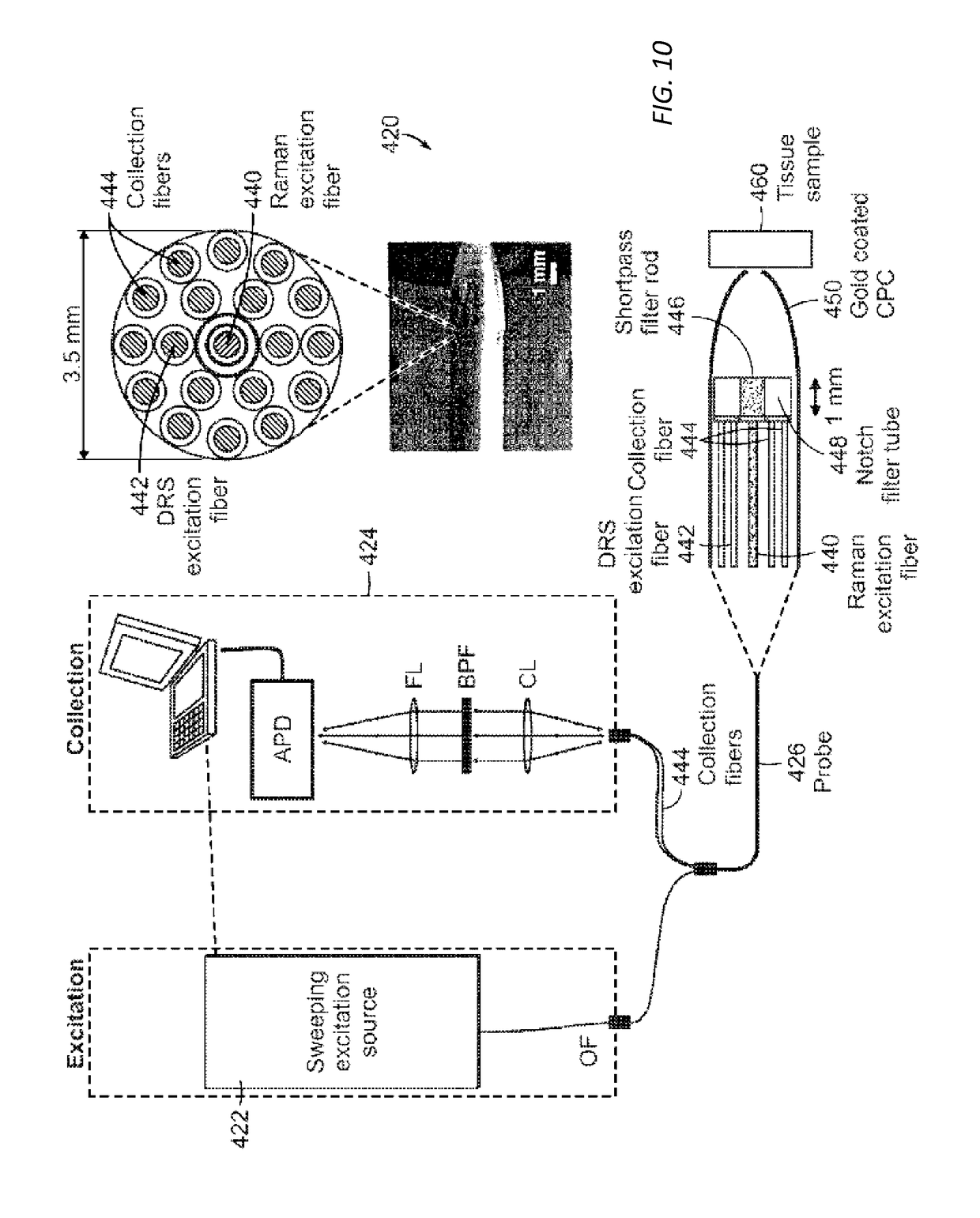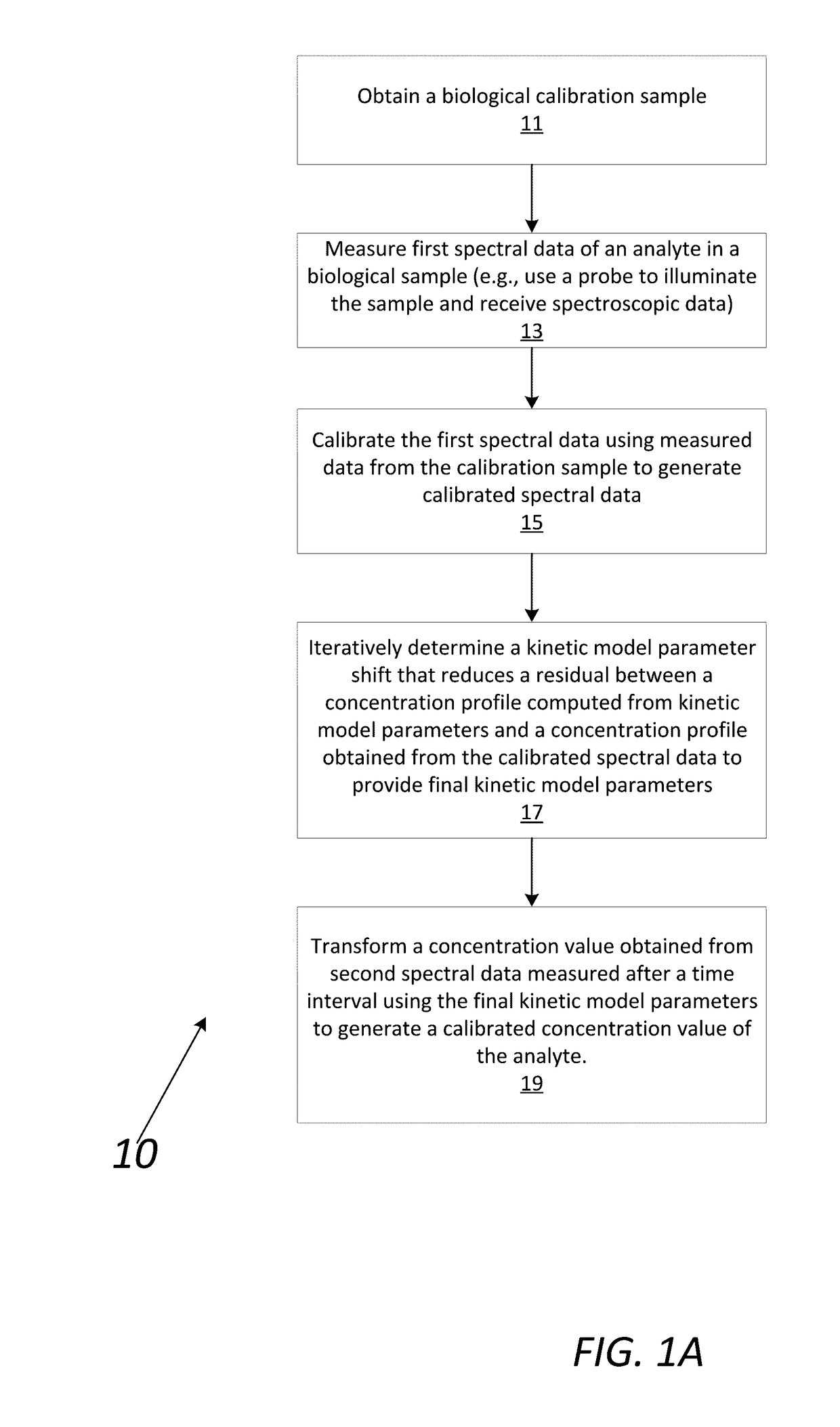Systems and methods for sampling calibration of non-invasive analyte measurements
a non-invasive analyte and sampling system technology, applied in the field of systems and methods for sampling calibration of non-invasive analyte measurements, can solve the problems of complex recording spectral signals, insufficient purity of samples to provide clean spectroscopic signals, and inability to change target constituents
- Summary
- Abstract
- Description
- Claims
- Application Information
AI Technical Summary
Benefits of technology
Problems solved by technology
Method used
Image
Examples
Embodiment Construction
[0037]The present invention relates to spectroscopic quantification methods that require reduced information as compared with current techniques to develop a calibration model. Although the methodology is widely applicable to a variety of measurement techniques and samples, it is described in detail in the present disclosure as applied to non-invasive glucose monitoring for simplicity. However, it is to be understood that the approach is in no way limited to a particular field or application.
[0038]Vibrational spectroscopy has emerged as a promising tool for non-invasive, multiplexed measurement of blood constituents—an outstanding problem in biophotonics. Embodiments of the present invention include a novel analytical framework that enables spectroscopy-based longitudinal tracking of chemical concentration without necessitating extensive a priori concentration information. The principal idea is to employ a concentration space transformation acquired from the spectral information, wh...
PUM
 Login to View More
Login to View More Abstract
Description
Claims
Application Information
 Login to View More
Login to View More - R&D
- Intellectual Property
- Life Sciences
- Materials
- Tech Scout
- Unparalleled Data Quality
- Higher Quality Content
- 60% Fewer Hallucinations
Browse by: Latest US Patents, China's latest patents, Technical Efficacy Thesaurus, Application Domain, Technology Topic, Popular Technical Reports.
© 2025 PatSnap. All rights reserved.Legal|Privacy policy|Modern Slavery Act Transparency Statement|Sitemap|About US| Contact US: help@patsnap.com



